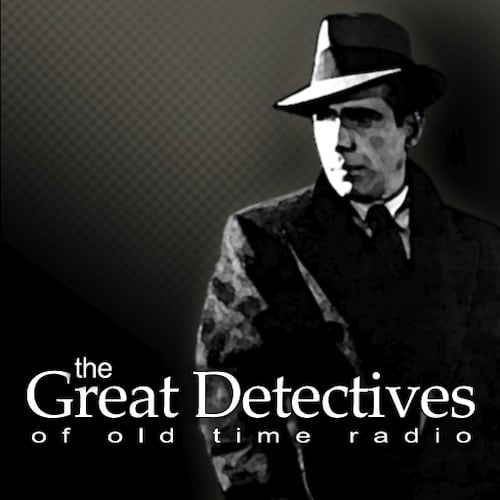A version of this review appeared five years ago
More than a decade prior to becoming universally associated with the character of Colonel John “Hannibal” Smith, George Peppard played Thomas Banacek, a Boston-based, Polish proverb-spouting insurance investigator. He made a comfortable living solving cases the insurance company couldn’t crack and collecting ten percent of the insurance company’s savings.
The series aired from 1972-74 and it focused on classic impossible mysteries. How does a football player on the field disappear in front of thousands of fans? How does a million dollars in cash vanish from behind a locked display case? How does $23 million in paintings vanish from a truck transporting it?
Banacek takes no case where the missing item is less than a million dollars in value. While a murder usually happens in the course of the investigation, it’s not guaranteed. The focus is on the big property crime, not on violence.
Banacek was part of NBC’s Mystery Wheel, so its original running time with commercials was 90 minutes, with the shows themselves running a shade over 70 minutes in length. This allows for plenty of development, particularly in the early episodes, without a lot of fluff. A grand total of doc episodes were released.
Throughout the series, Peppard was supported by Ralph Manza who provided the comic relief as Banacek’s chauffeur and erstwhile sidekick, Jay. Manza’s character would occasionally take a crack at the solution that would be invariably offbase. Murray Mattheson played Felix Mulhol, a bookstore store owner that seemed to know everything about everything.
Banacek was portrayed as God’s gift to women, at least those who weren’t looking for a serious relationship. Among the Banacek women was future Lois Lane Margo Kidder. However, scenes in bed were avoided throughout the series, as mere verbal hints were all that would be allowed.
The second season did see some changes. In the first season, the insurance company was more than happy to hand over six-digit checks in order to avoid seven-digit losses. However, in the second season, an insurance company exec tries to thwart Banacek with the help one of his own investigators Carlie Kirkland (Christine Belford) who tried to maintain an on-again, off-again romance with Banacek while trying to beat him out of his exorbitant fees.
This was a bad move, as it tampered with the show’s dynamic, slowed down the stories, and didn’t add anything to the plot. Kirkland wasn’t particularly likable. In one story, she wormed her way into an investigation, asking to learn from Banacek while on a leave of absence from the company and then tried to sell him out to her insurance company. The character didn’t appear in the last two episodes of the second season since the episodes were set outside of Boston.
The second season disc for Banacek contains the original pilot which shows a bit of the original conception. In the original conception, Banacek only worked cold cases that hadn’t been solved in sixty days and the executive commented on how much money the insurance company has squandered on investigators’ pay and expenses searching for millions of dollars in gold. Perhaps this is why the producers went with a format where Banacek came on with a promise of reward soon after the items were stolen. It made more economic sense. In the case in the pilot, they ended up out all the money they paid the investigators plus the reward.
Peppard played Banacek differently in the pilot. He was a quieter, less flip character. He spent a good fifteen minutes straight on screen at one point saying nothing. He spoke with conviction, explaining why he didn’t change his last name to something less obviously Polish.
Jay and Carlie were also in the pilot. Jay was quite different. He owned a limo rental business based in Dallas rather than being Banacek’s employee and simply drove him around. He also pulled a classic double-cross when he bribed the operator to listen in to Banacek’s phone call and overheard a key clue which he used in hopes of collecting the reward. Definitely a different conception than the loyal, albeit dimwitted character who’d appear in the rest of the series.
Overall thoughts:
Banacek is certainly not an essential mystery series. Unlike Columbo, Poirot, or Monk, Banacek is one of those shows you can take or leave.
Peppard is at his best as the wise-cracking detective who stays one step ahead of cops and official insurance investigators while hunting down items of unbelievable value.
The first season is a well-performed series with great mysteries, solid plots, and great solutions. The second season has too much airtime taken up by Carlie Kirkland and that drags down the stories. Still, even that season has the great entry, “If Max Is So Smart, Why Doesn’t He Tell Us Where He Is?” as well as the fairly good, “Rocket to Oblivion.”
Overall, I’d give the series three 3.5 stars out of 5.0 with Season 1 getting 4 stars and Season 2 getting a 3.
In terms of availability, Banacek is a hard series to lay your hands on. The season sets are out of print. Last time, I recommended a bargain best of Banacek DVD with six episodes on it and that’s also gone out of print. I watched it originally through Netflix’s DVD rental service. but Netflix no longer carries it. If your local library doesn’t own it, viewing the series may come at a premium that could price it out for anyone but diehard fans until a new printing is done.
If you enjoyed this post, you can have new posts about Detective stories and the golden age of radio and television delivered automatically to your Kindle.
This post contains affiliate links, which means that items purchased from these links may result in a commission being paid to the author of this post at no extra cost to the purchase

